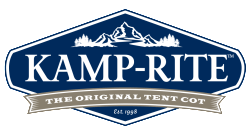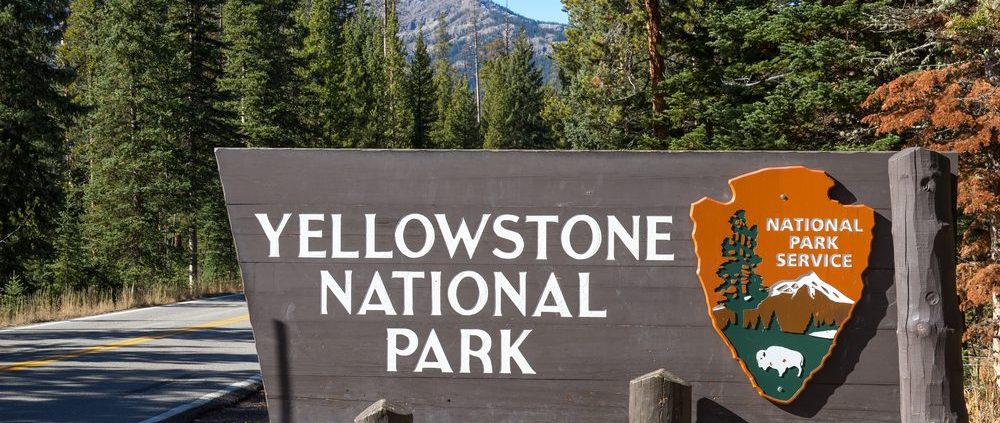Go Explore: Yellowstone National Park
Spring is finally here, which means your next camping trip should be right around the corner. If you haven’t planned your next outdoor adventure, we highly recommend Yellowstone National Park. With over 12 campsites and 8 districts to explore, you’re bound to have a trip to remember. If we haven’t sold you yet, keep reading for our ultimate guide to Yellowstone National Park.
Where to Go
Spanning almost 3,500 miles in size across 3 states, America’s first national park is known for its dramatic canyons, alpine lakes, lush forests, hot springs and gushing geysers, including its most iconic—Old Faithful. Most of Yellowstone’s 2 million-plus acres rest atop a high plateau—a volcanic caldera that still fuels the park’s mud spots and geysers, which were the park’s main points of attraction in its early years.
There are more geysers and hot springs in Yellowstone than anywhere else on Earth—60% of all the world’s geysers are located in Yellowstone. These geothermal features were actually the biggest draw of the park during its earliest days after it became the country’s first national park in 1872. In fact, when John Colter, a former member of the Lewis and Clark expedition first ventured into the Yellowstone area in 1807, his depictions of the park’s streaming geysers were met with ridicule and incredulity by the rest of the country back East. As the West was settled, however, Yellowstone’s importance as a wildlife sanctuary grew. The list of park animals is a collection of Rocky Mountain fauna: elk, bison, mule deer, bighorn sheep, grizzly bears, black bears, wolves, moose, pronghorn, coyotes, mountain lions, beaver, trumpeter swans, eagles, ospreys, white pelicans, and more.
What to Explore
Yellowstone’s immense area is divided into 8 distinct districts by the National Park Service:
Mammoth. Home to Yellowstone Park headquarters and historical buildings, as well as wildlife, and the famous travertine terraces.
Norris. Includes Norris Geyser Basin, one of the more dynamic geothermal basins within Yellowstone, along with open meadow scenes with wildlife and views along the Gibbon River.
Madison Junction. Best known for its fly fishing and wildlife. Also includes the Seven Mile Bridge area, which is known for great bird-watching.
Lake. Includes Yellowstone Lake, North America’s largest high-altitude lake, as well as hot springs, fumaroles, and wildlife. You can also enjoy boating, fishing, hiking, and viewing hydrothermal features.
Old Faithful. The world’s most punctual geyser is a must-see when going to Yellowstone. However, expect it to be crowded if visiting in the summer. The Old Faithful district is where you will spend most of your time viewing geysers, hot springs, steam vents “fumaroles,” and paint pots, views along the Firehole River, as well as wildlife.
Canyon. Within the Canyon district, you’ll find Hayden Valley, one of the better high elevation grazing meadows in Yellowstone for viewing bison. This spectacular canyon, along with the Upper and Lower Falls of the Yellowstone River, can be seen from the overlooks and trails of the Canyon Village area, and from the Tower Fall and Calcite Springs overlooks south of Tower Junction.
Tower/Roosevelt. The Tower/Roosevelt district is best known for its wildlife, waterfall and river scene, as well as geologic evidence left behind by past volcanic eruptions.
Grant Village. Includes the West Thumb Geyser Basin, Yellowstone Lake, Abyss Pool, Shoshone Lake, and Snake River.
If it’s your first time at the park, we recommend starting with the Yellowstone’s iconic Old Faithful, but don’t ignore other nearby geysers, like those on the aptly named Geyser Hill. After that, we suggest heading to the Grand Canyon of the Yellowstone, where trails along both its north and south rims give unforgettable views of the canyon and its waterfalls. Finally, visit Lamar Valley, a favored location to observe an array of Yellowstone wildlife ranging from bison to elk to river otters.
Where to Set Up Camp
Yellowstone features 12 campgrounds throughout the park—5 reservation campgrounds (1,700+ sites) and 7 first-come, first-serve campgrounds (450+ sites). Depending on the area, these campgrounds open up as early as April to as late as June, so you’ll want to check the National Park Service’s website for this information before planning out your trip. Below are five of our favorite spots to set up camp. Reservation campground.
Canyon Village Campground. Located within a mile of the Grand Canyon of the Yellowstone, Canyon is one of the most popular campgrounds. The Canyon Campground is a favorite due to its wooded setting and relatively central location within Yellowstone Park. There are several ways to access the Grand Canyon from the campground: North Rim Drive provides turnouts and several overlook access points as well as a few views of the stunning Lower Falls. Along the south rim, Artist’s Point Overlook and Uncle Tom’s Trail are two other popular points of interest for views of the canyon and waterfalls. Reservation campground.
Slough Creek. Tucked into the park’s northeast corner, Slough Creek is a full two hours from Old Faithful, at the far end of a 2 1/2-mile gravel road. But the trip is worth it. At your destination, you’ll find a creekside beauty, cutthroat trout, and some of the park’s best wildlife-watching (bison and the occasional grizzly). First-come, first serve campground.
Lewis Lake. Near Yellowstone’s southern entrance, Lewis Lake tends to fill up more slowly than other park campgrounds― which is strange, because it’s lovely, with trout fishing and good hiking. First-come, first serve campground.
Bridge Bay Campground. Named for its proximity to Bridge Bay Marina on Yellowstone Lake, this campground is quite scenic, with wooded areas, open meadows and some limited views of the lake. Because of its location, the campground is popular with fishing and boating enthusiasts. The campground offers open sites with few trees or shadier options in the wooded upper loops of the campground. The location is within sight of the western shoreline of Yellowstone Lake, and at 7,800 feet in elevation. Reservation campground.
Pebble Creek. A bit east of Slough Creek, Pebble Creek, it also offers excellent wildlife-watching and fishing, plus gorgeous hiking along the 12-mile Pebble Creek Trail. First-come, first serve campground.
Campsite Essentials
Double Tent Cot + Queen Self-Inflating Mattress: With thousands of miles to explore in Yellowstone, you’ll want to come back at the end of a long day of adventuring and rest your bones on something comfortable. Combine a Queen Self-Inflating Mattress with a Double Tent Cot for the ultimate sleeping experience.
3-in-1 Sleeping Bag: Unpredictability, more than anything else, characterizes Yellowstone’s weather. The 3-in-1 Sleeping Bag, with its multiple layers and 0-degree rating, can adapt to the multiple weather conditions you may find yourself in.
Privacy Shelter With Shower: Yellowstone’s 12 campgrounds vary in amenities—some do not have showers or flush toilets on site. The Privacy Shelter with Shower has you covered so you’ll always have the right amenities wherever your adventure takes you.
Padded Chair with Mesh Back: Every campsite needs a solid, comfortable seating option. The Padded Chair with Mesh Back is a fantastic chair that delivers an extra level of comfort with its padded seat and mesh chair back.
Kwik Pantry with Cook Table: Makes cooking a breeze and keeps your campsite organized.

